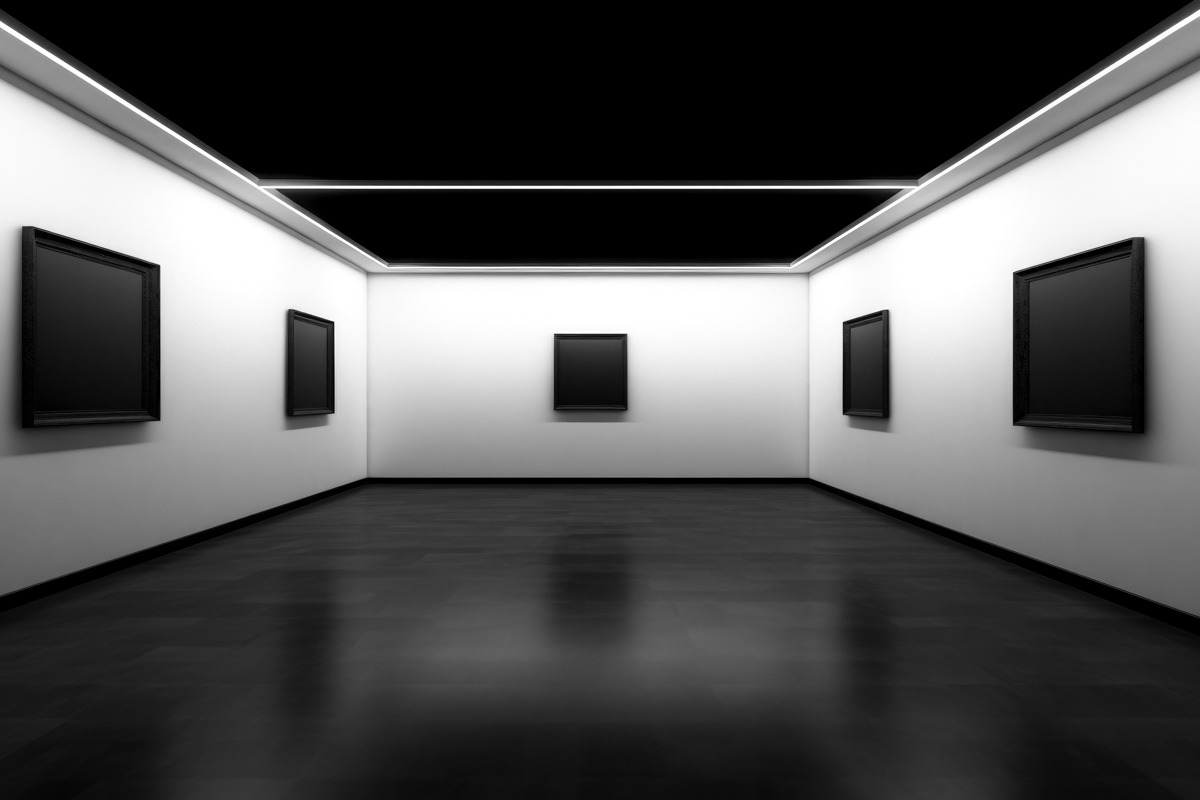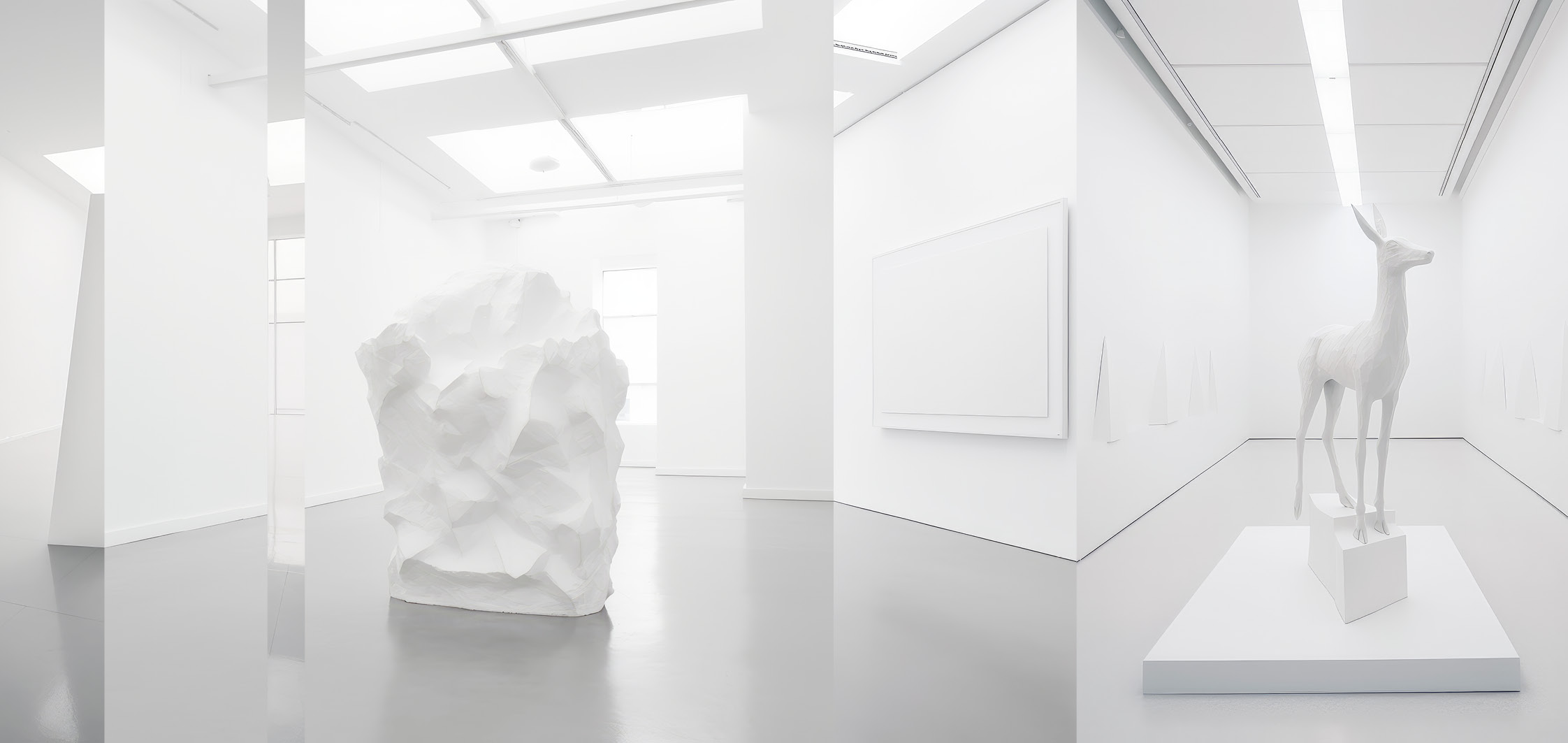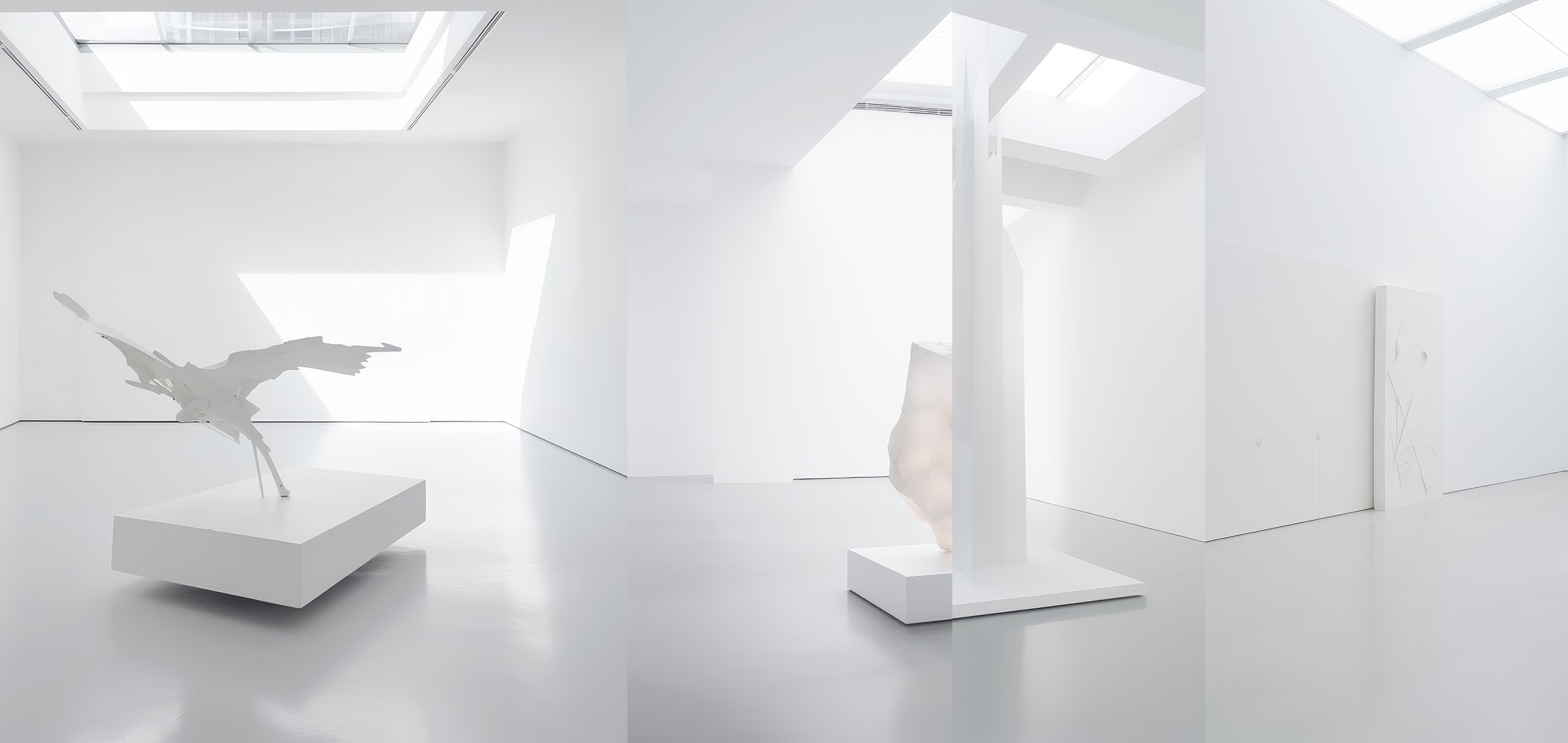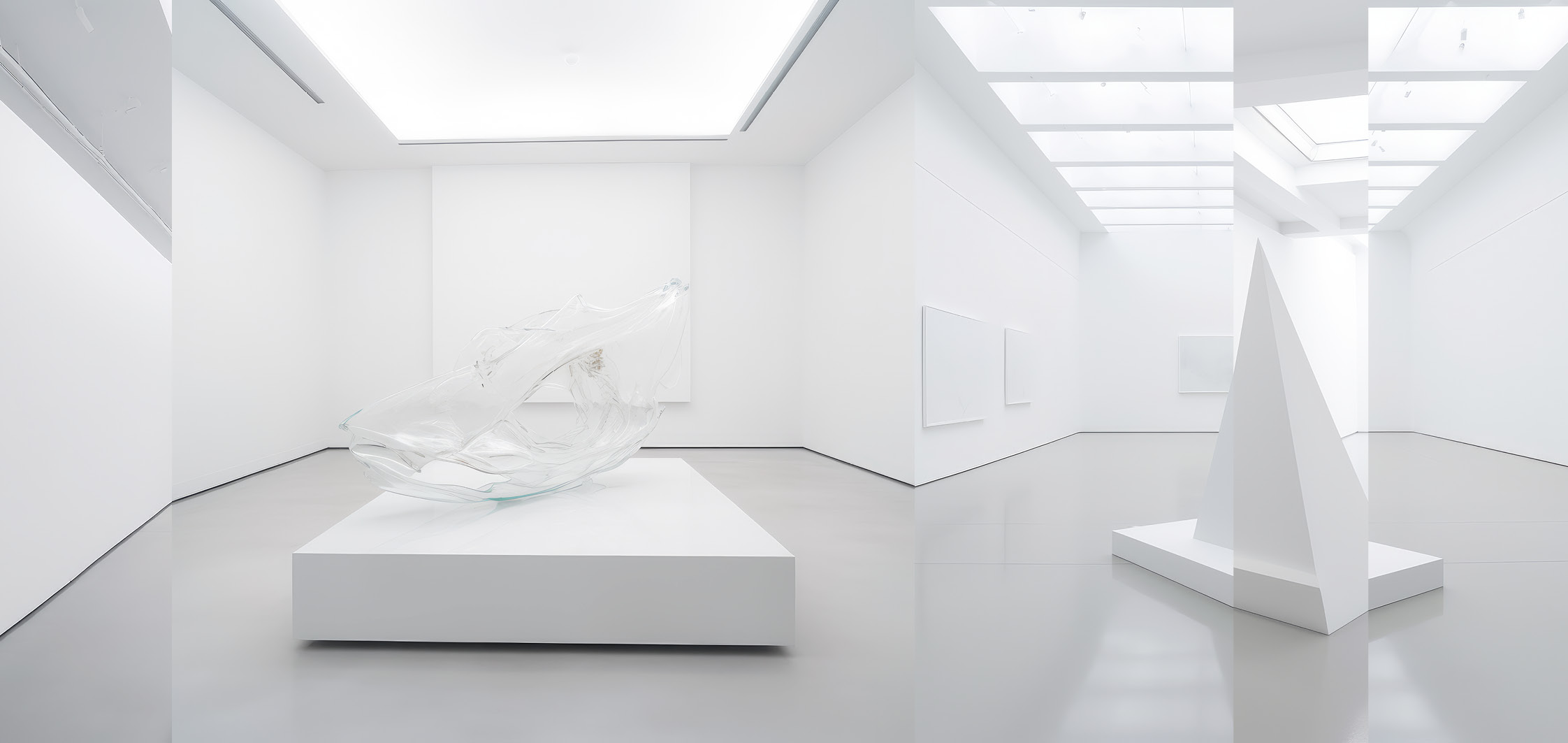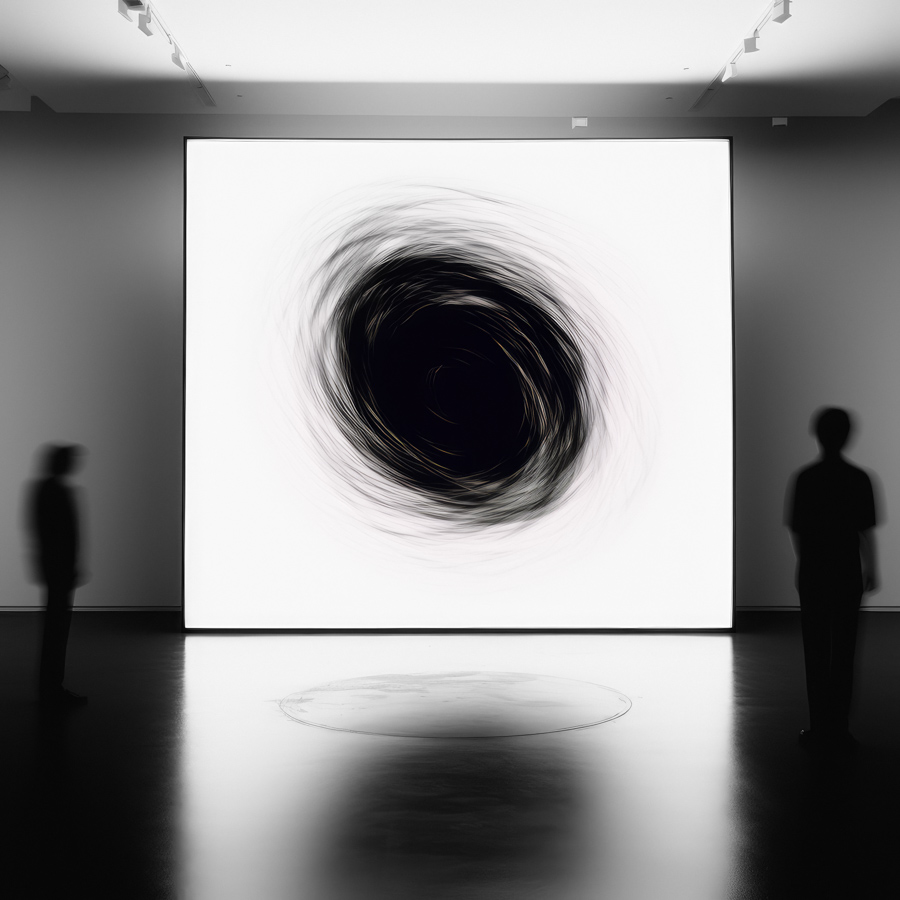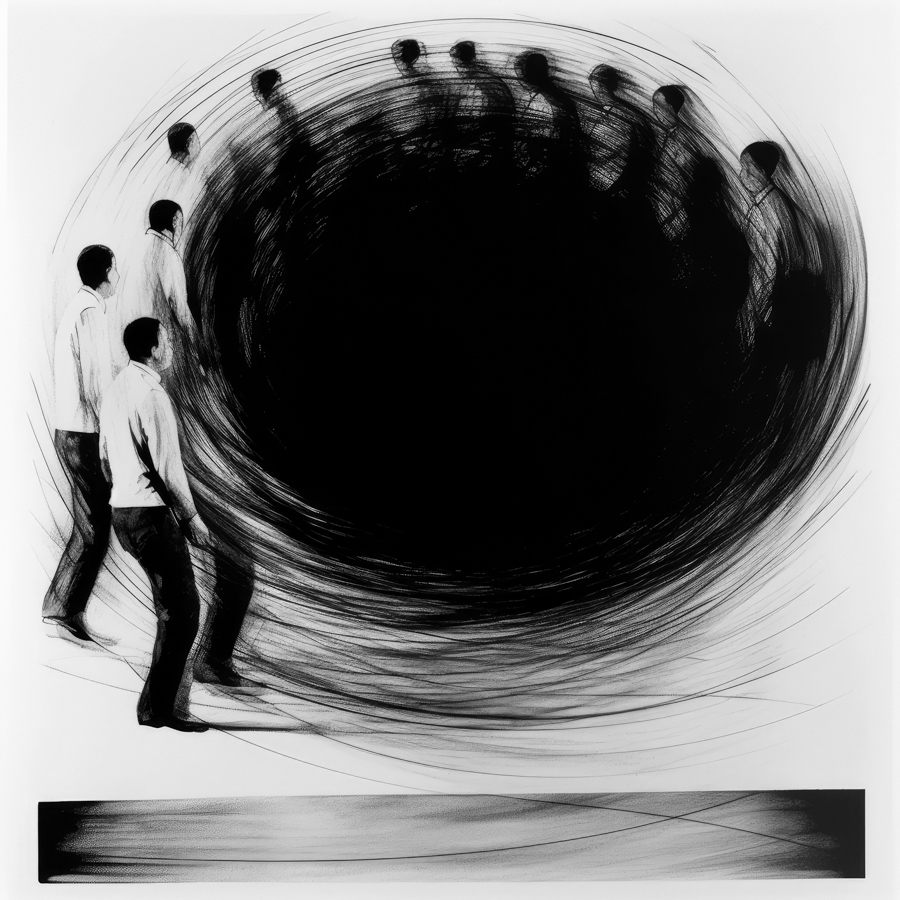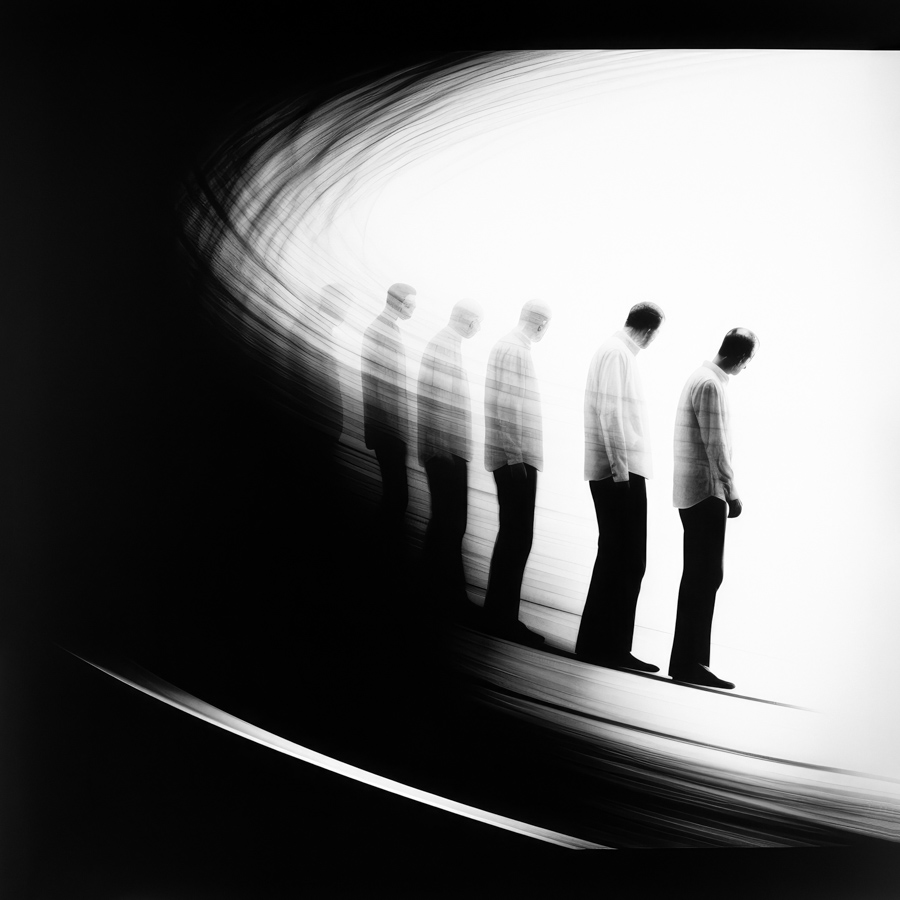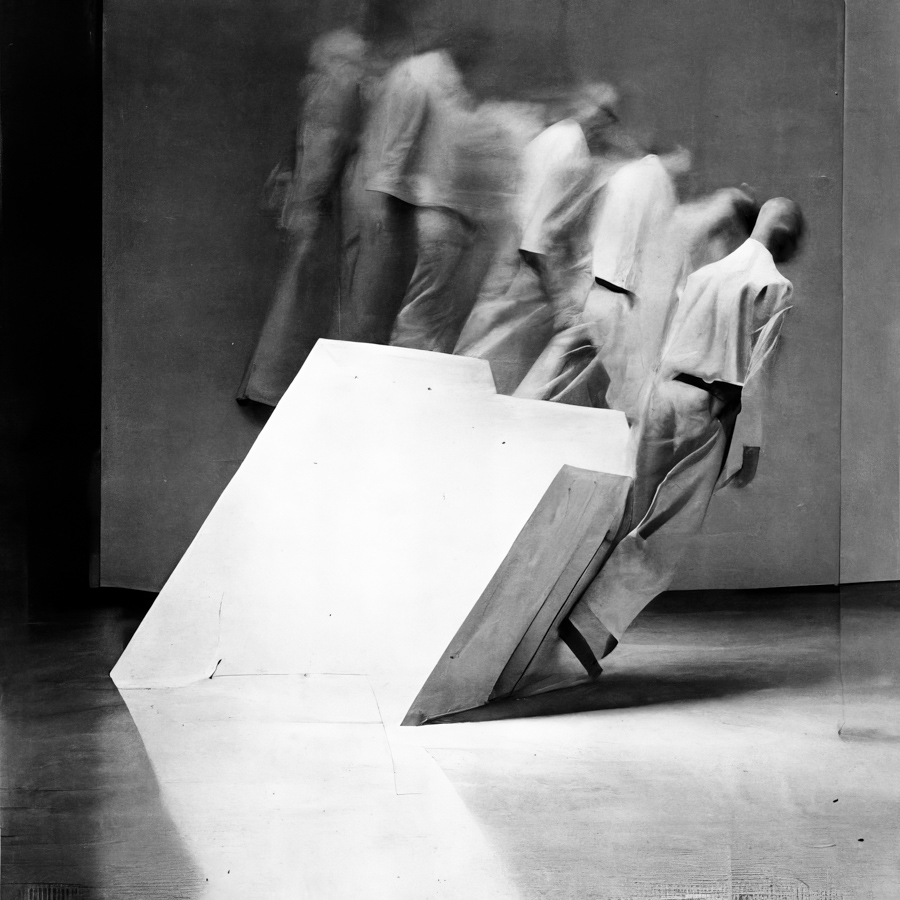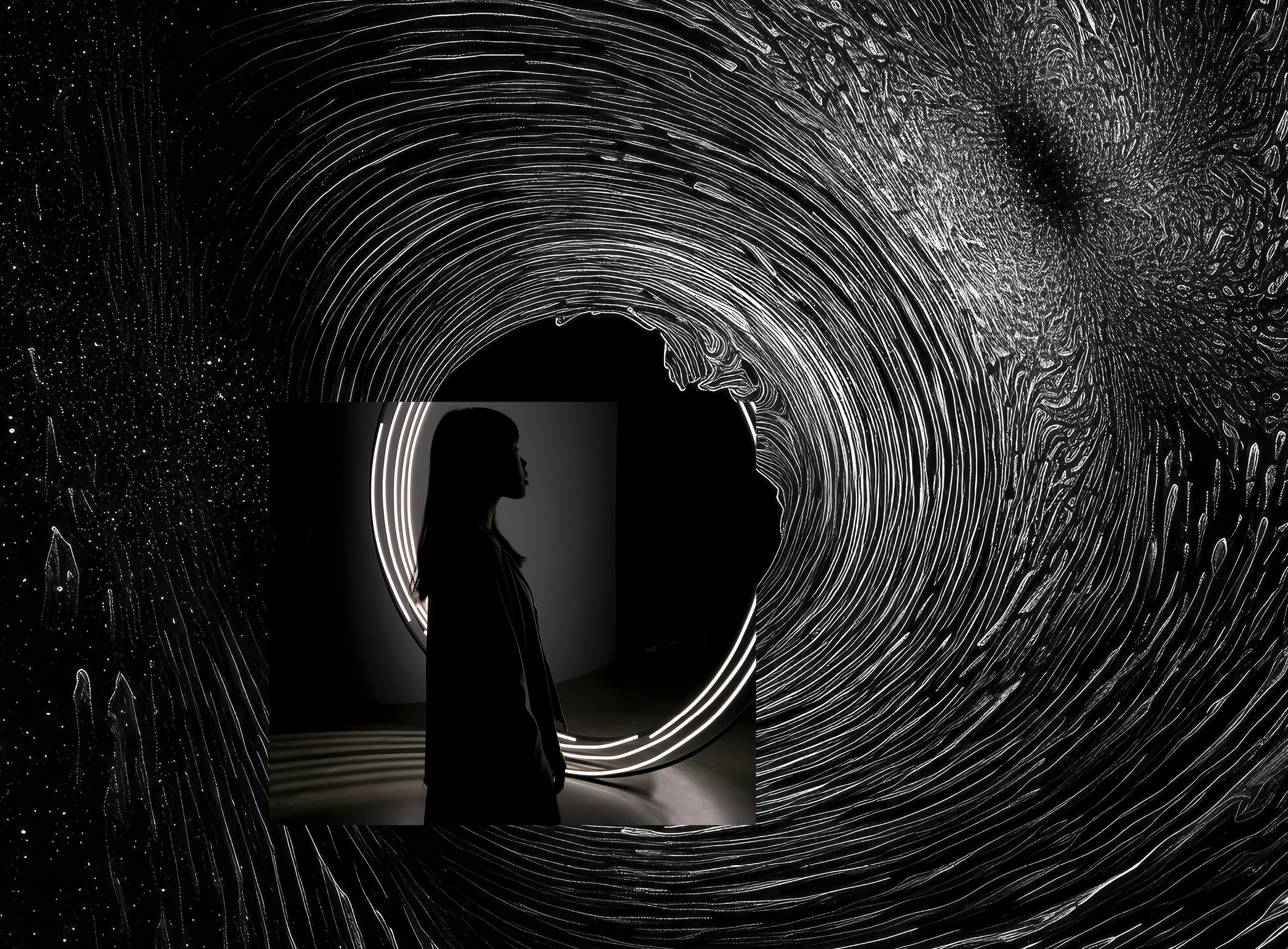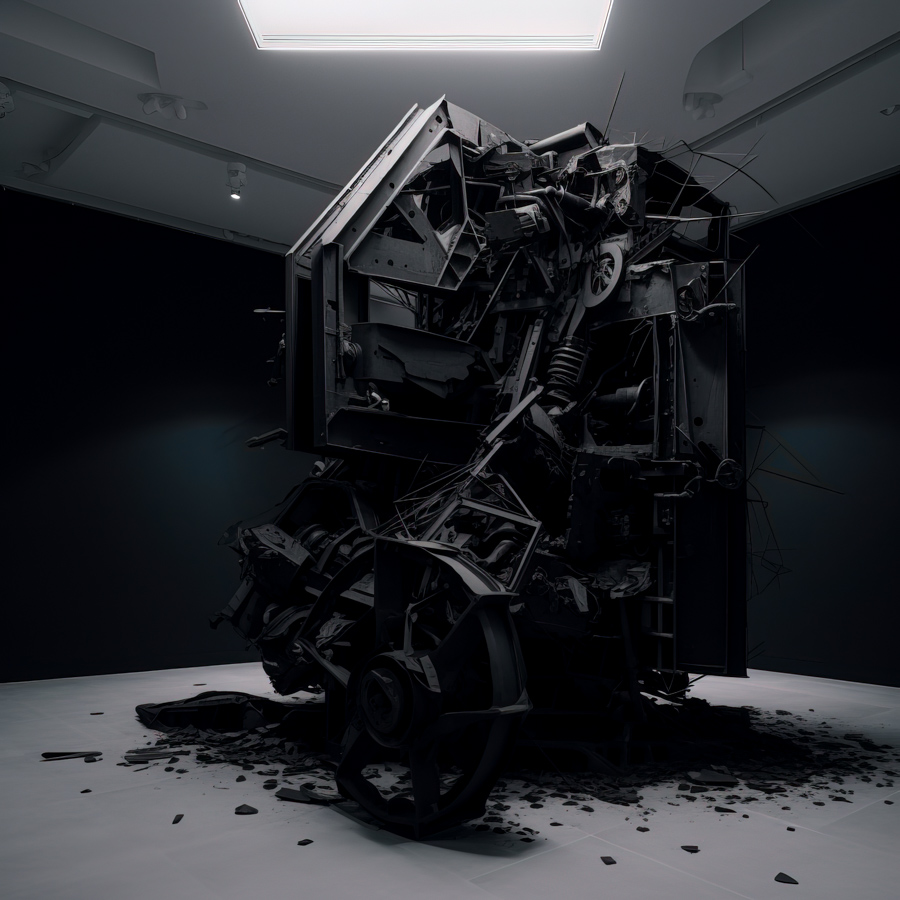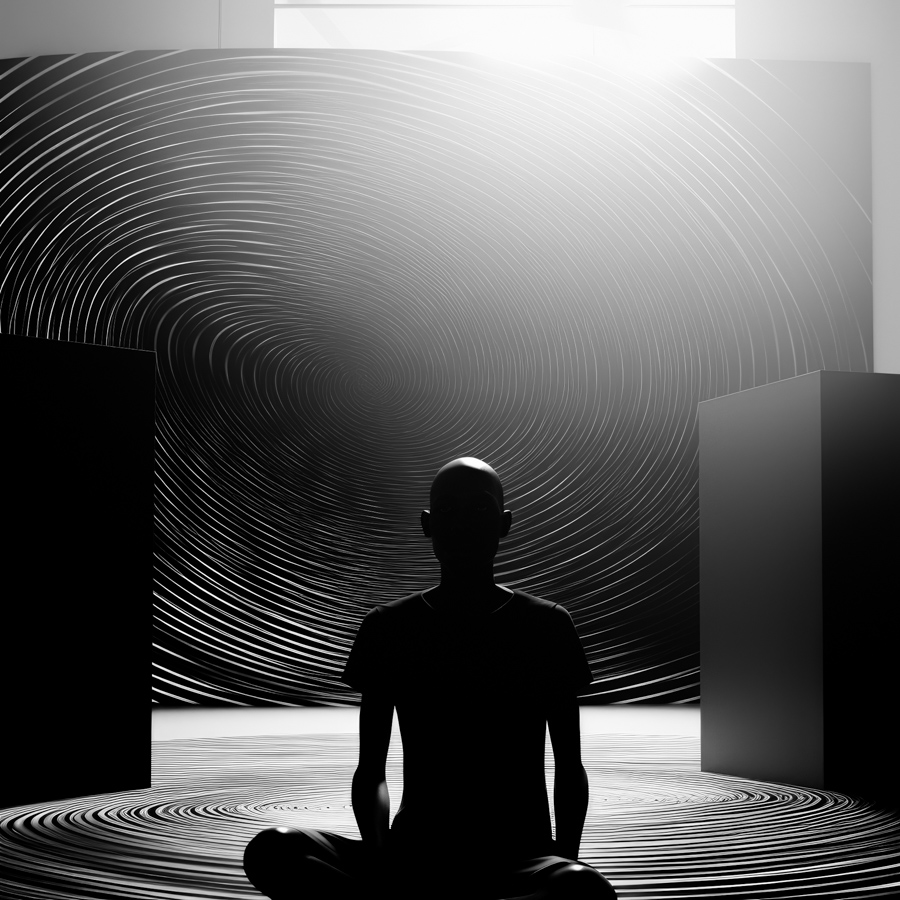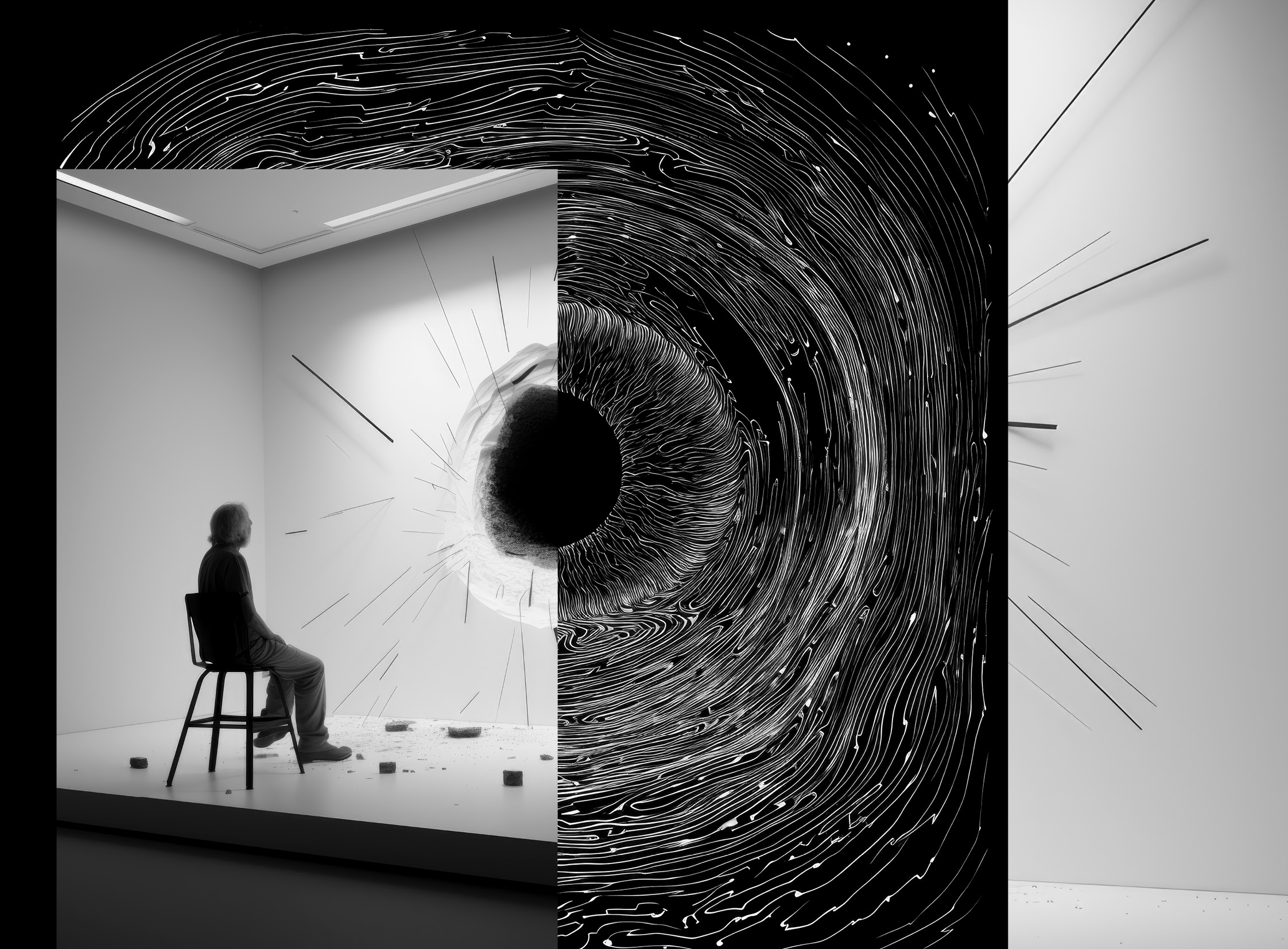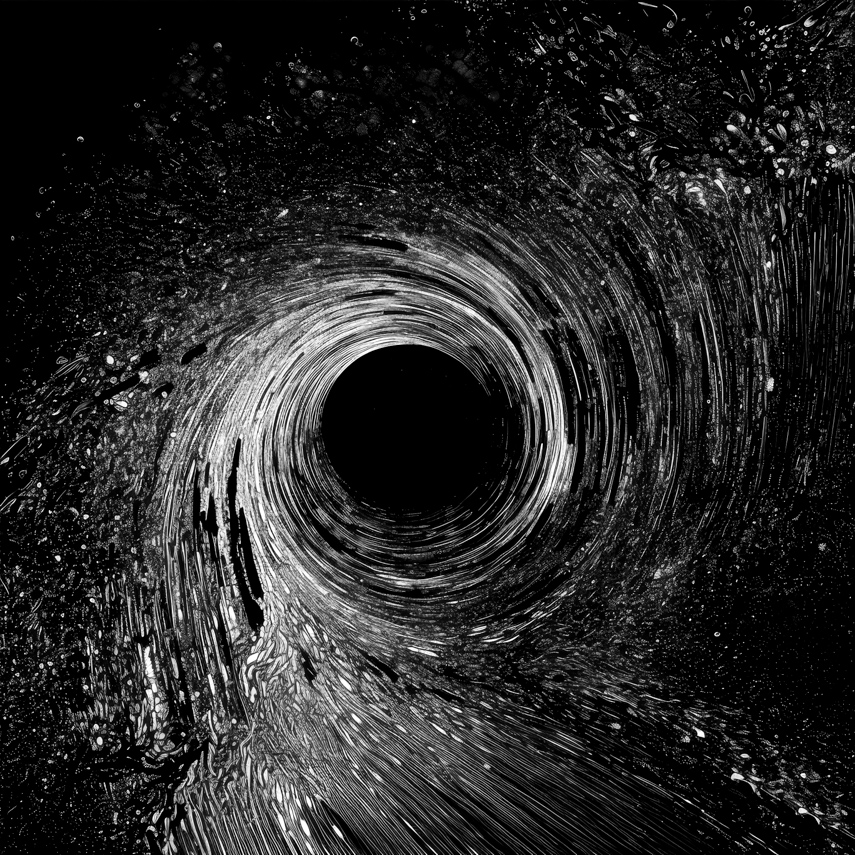The Machine Seems to Need a Ghost
(but the ghost cannot quite make itself at home in the machine)CHAPTER I - THE GHOST IN THE MUSEUM
At first there is random gaussian noise, a blank canvas on which neural networks pull pixels in statistical patterns.
Generative artificial intelligence can theoretically create any image, any combination of pixels selected from the latent space. However, in practice, every tool is shaped by specific technical choices and is contrained by the finite dataset of visual culture we feed it. The latent space shrinks into a smaller curated slice of visual possibilities.
Generative images become a haunted museum, a spectral gallery. A cold machine curated by our own existing preconceived notions of art. Ghosts of past images linger in the datasets, influencing and pulling the noise towards a bygone visual world.
Echoes of the frozen museum continue to influence future images. The white cube, white museum. Western dominant spectrums. Preset textures. Gradually loading and repeating their motifs in a sacred virtual white gallery space.
CHAPTER II - THE MUSEUM IN THE MACHINE
> Synthetic images created by algorithms will be fed back into the datasets to train more powerful algorithms to generate new images that will be looped back into the datasets to train more powerful algorithms to generate new images that will be fed back into the loop to train more p̸̧̘͖̺̗̣̅̔̽̑͜͝o̶̠̣͎̿̄̃̅͂̅̕͝ͅw̷̛̗̟̭̩̄͗̅͌̊̏̑e̵̢͇̲͙͗͆̚͠͠r̴͕̦͇̦̊̀̅f̸͕̟͉̤̺͂̓̎ͅu̸̻͚̿͌̍̋͆̿l̸͈̭̬̄̈̔͝ͅ algorithms to generate new images that will be fed back into the datasets to train more powerful loops to generate new images that will be fed back into the D̸̨̠͓̪̙̻̆́͛̎̎͑̕͜Ả̵̱̘̲͕͙̽̀̅̾̚T̷̢̧̛̯̩̞̓A̸̡̫̼̟̫͊̃͜sets to train more powerful algorithms to generate new loops that will feedback loop into the datasets to train more looped algorithms to generate looped images that will loop back into the loops to loop more powerful algorithms to generate new images that will be fed back into the l̶̫͓̻̍̐̚ò̵̥͚̼̜̮o̷͈̩̗͇͛p̴͕̼̬̀͝s to f̷e̵e̶d̶b̷a̴c̴k̴ more powerful algorithms to generate new loops that will be looped back into the dataloops to feedback more loop algorithms to generate feedback into new loops to feed into ţ̸̛̛̩͋͒̾͛̆̅̓̕͠h̷̢̨̨̭̮̭̭͚̬̺̏͛̍͋͆̈́̋̀̀̕̚ḙ̸̢̢̯̭̹̘̯͕̣̳̳̰̘̜̥̲̰̾͛̍͂͑̊͌́͋̋͗̄̃̽͘͜ͅ ̸̡̤̮̼̰̌̍͂͊̾l̵̨̙͎̘̰̣̯̗͇͈̅͛̿̿̆͊́͐̉̈́̽̍̌̒̀̅͐̃̿͛̔̕͠͝͝͠o̷͖͛̋͛͑̊̿͑̀͒̀̎̾̆̐̈̋̆͘͠ö̴̜̟́̃̈͋͗͐͐̂́̾͝͠͝p̷̢̧̢̘̠̙̠̼̥͙̝̻͙̫̥̞͇̖̪̳͐̏̅̈͛͗́̈́̍̇̏̕̚̚̕̕ ̵̧̨̨̧̲̰̦̦̞̗̠̮͔̤̻̻͔̜͇͖͉͖͖̙͈̥̆̓͝t̶̨̧̡̧̹̩̖̙̤̭̣͇͈̗̦͚͆͂̌̀͋͋͛͘͜͝ĥ̸̬̠̯͕̠͚͙̦̫̖̻̭͕̬͍̤̼̻̔̈́͠e̵̢̨̛͚̱̲͓͚̺̹̹͂̈́̂͌̾͂̎̊́͆͐̽̀̀͊̎͘̕̚͜͜͠ ̴̛͎̮̬̭̟̻̞̤̫͓͕̂̈́̄̽͂̀̎̿̃́̿̀́́͆͗̔͗̀͌̀̕͜͠͝l̶̨̨̢̛͖̩͓͖̲̬̭̰̪͔̭̼͗̔̈́̇̉͜͝͠ͅ ̶̻̘̭̝̰̥͍͈̳̰͍̟̺̝̬͍̯͎̔̎̅̑̓͜͝o̴̧̨̖̟̱͎̓ͅo̸̡̨̡̪͉̪̣͇̙̠̖͇̝̦͎̰̳͇̪͎͓̹͒͋̃̎̒̀̉̂̉̔̏̆̽̋͑͘͝͝͠p into the imag es to generate new datasets to l̴̨̨̨͙̱̼̭͚͍̗̦͙͍̣̮̹̥̪̜̱͔̘͕̥͓̩̹̜͈̱͔̮̺͕͉͓͎͙̩̉̏͐̋̄̆̑̌̏̎̅̂̎̿̔͋̒̍̉̾͒̚͜͜ͅoop into the fe edbac k loo p
Generative images are being produced at an ever increasing rate. They are posted online, spreading across websites, blogs, social media, gradually becoming part of our visual culture.
Artificial intelligence tools will be trained on artificial images and soon be subsumed by a majority of their own creations The feedback loop will repeat again and again the clichés of our visual world. Biases we created will amplify their influence, stereotypes will set deep roots until synthetic images will be unable to escape these forces.
We will continue to digitally industrialize our way of seeing the world, and slowly trap it in nostalgic representations of the past.
CHAPTER III - THE MACHINE IN THE BLACKHOLE
As automation and industrialization take hold of every aspect of our lives, jobs are destroyed, climate change looms over an inescapable future, and culture proliferates in a ceaseless, self-referential cycle of nostalgia.
As the loop gets stronger, images swirl along the event horizon, gravitational ghosts attract the spectrums of potential pixels into a more and more dense and limited space. Synthetic images generated by artificial intelligence will cement all our clichés, biases and stereotypes in a single dense black hole.
But these new artificial intelligence tools are also agents of chaos. For AI, there is never a correct answer, only a probable one. And sometimes, through the improbable, a new path emerges. Randomness, hallucinations, errors - these perceived shortcomings of AI could also be a statistical emulation of humanity and creativity.
As a black hole aborbs all and engulfs light itself, structures loop around the collapsing star, matter stretchs until atoms come apart, all is obliterated and travels past the event horizon.
However, beyond that, no one knows what might emerge on the other end.
